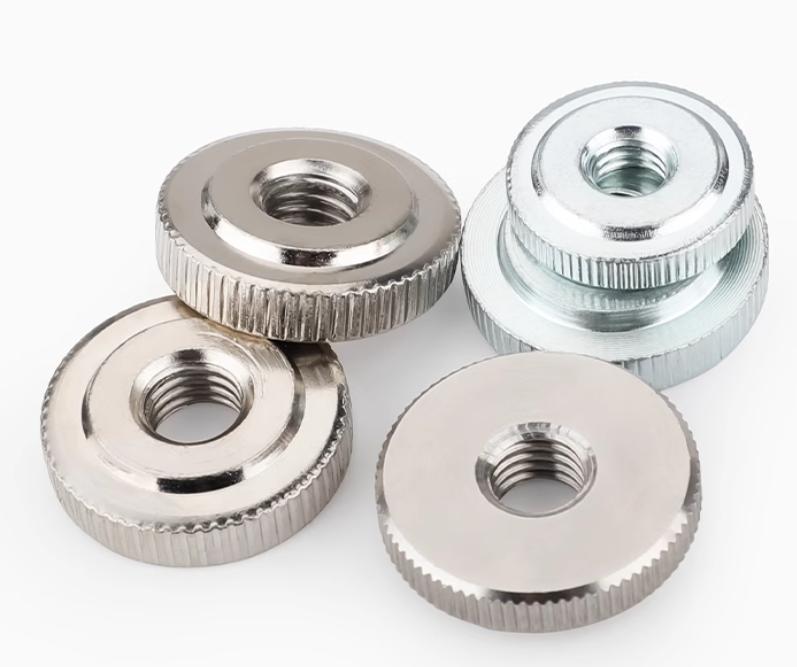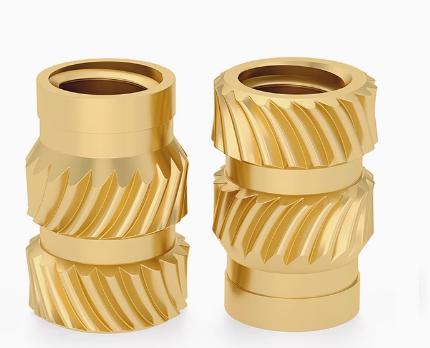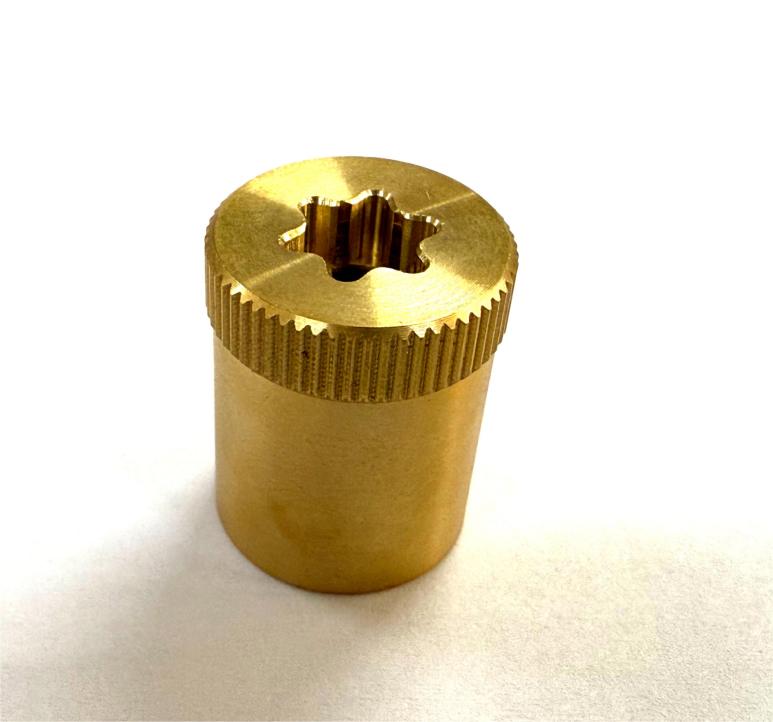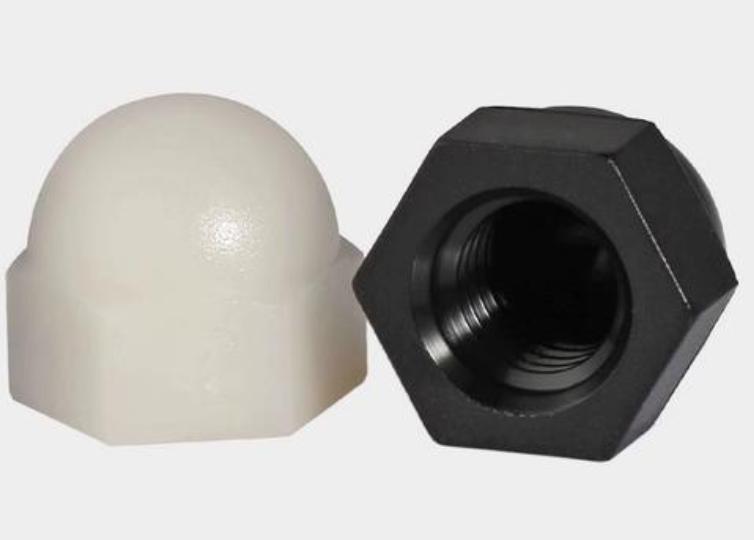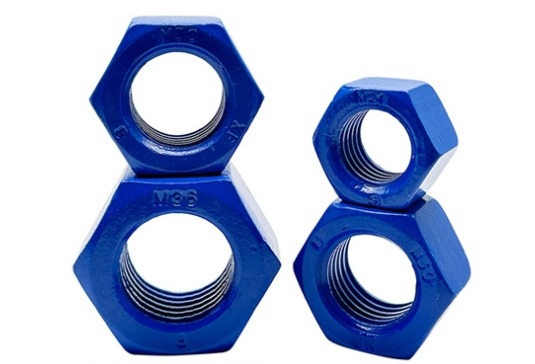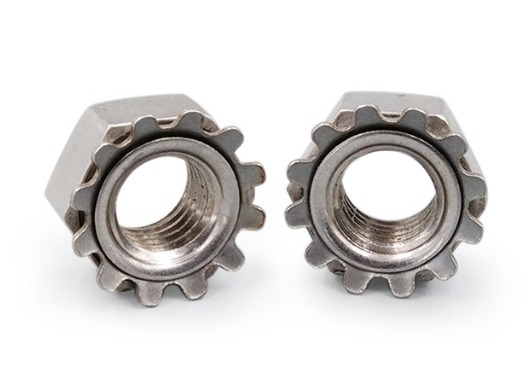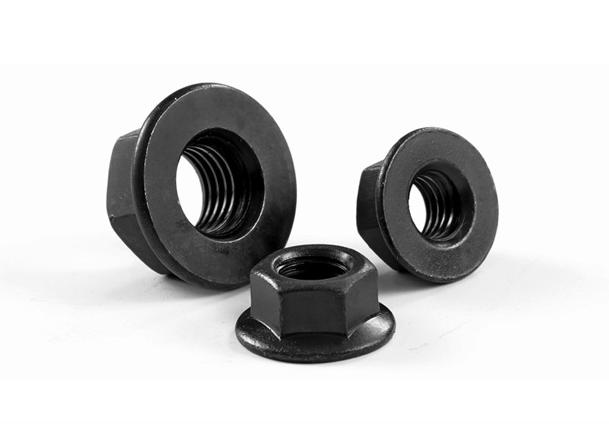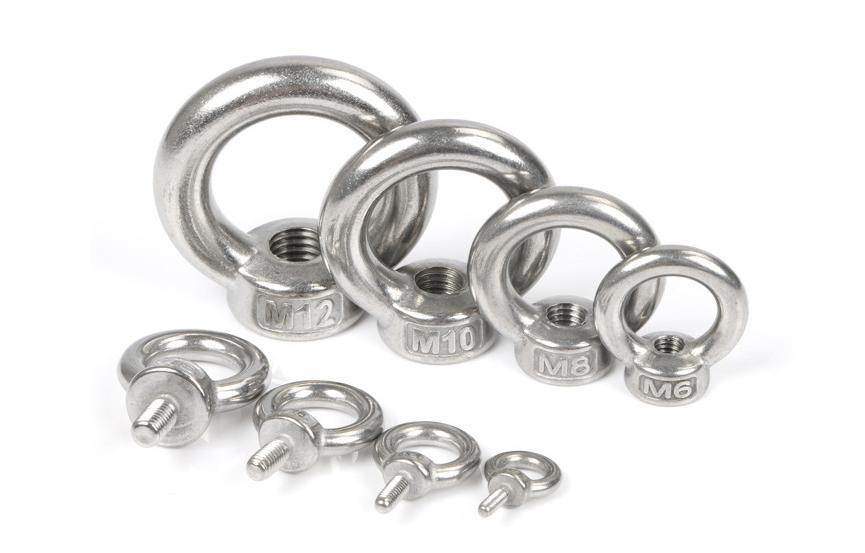Exploring the Different Types of Hex Nuts: How to Choose the Right Type
Hex nuts are among the most widely used fasteners, thanks to their versatile six-sided design, which makes them easy to handle and highly effective for various applications. While they may appear similar, hex nuts come in numerous types, each tailored to specific needs, environments, and functionalities. This article explores the different types of hex nuts, providing insights into their unique features and applications.
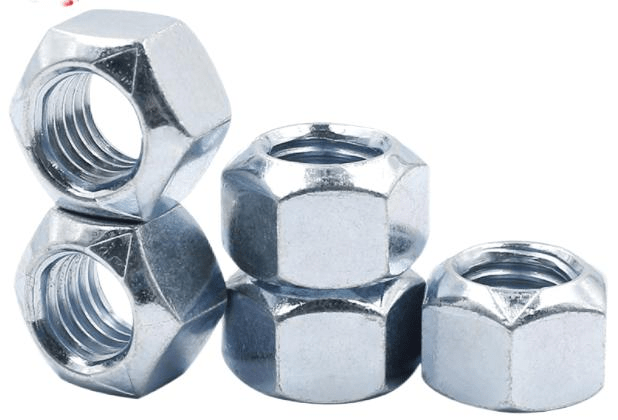
Table of Contents
What are Hex Nuts
Hex nuts are six-sided fasteners designed to be paired with bolts, screws, or studs to secure materials together. The hexagonal shape is universally preferred due to its ease of use with standard wrenches and socket tools, providing efficient torque application and ensuring a firm grip. Their standardized design allows for compatibility with a variety of bolt diameters and thread patterns.
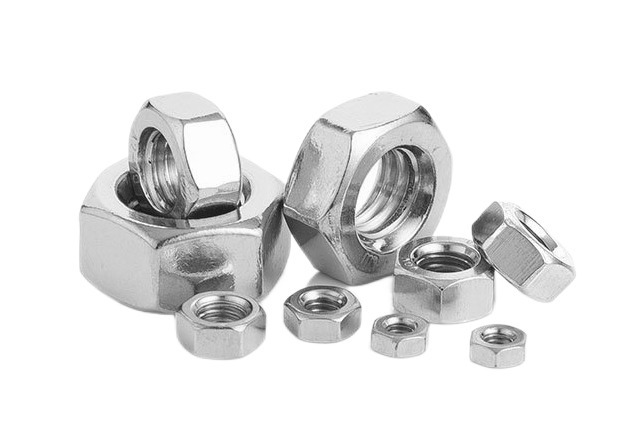
Materials and Finishes
This chart provides a comprehensive overview of the materials and finishes of hexagon nuts, highlighting their applications, advantages, and suitability for various environments.
| Material | Description | Applications | Common Finishes |
| Carbon Steel | Strong and durable, widely used for general applications. | Construction, machinery, automotive industries. | Zinc-plated, black oxide, plain, galvanized. |
| Stainless Steel | Corrosion-resistant, ideal for harsh environments. | Marine, food processing, outdoor applications. | Polished, passivated, plain. |
| Alloy Steel | Enhanced strength and toughness through alloying elements. | High-stress applications like heavy machinery. | Zinc-plated, black oxide, cadmium-plated. |
| Brass | Good corrosion resistance and conductivity, softer than steel. | Electrical and decorative applications. | Polished, plain, lacquered. |
| Aluminum | Lightweight, corrosion-resistant, and non-magnetic. | Aerospace, automotive, lightweight structures. | Anodized, plain. |
| Nylon | Lightweight and non-conductive, often used in locking nuts. | Electronics, low-load applications. | Plain or self-colored. |
| Titanium | High strength-to-weight ratio, excellent corrosion resistance. | Aerospace, medical, and marine industries. | Plain, polished, anodized. |
| Phosphor Bronze | High wear resistance and low friction properties. | Electrical components, marine applications. | Plain or tin-plated. |
| Plastic (Polymer) | Non-corrosive, non-conductive, and lightweight. | Low-stress, chemical-resistant applications. | Plain or colored. |
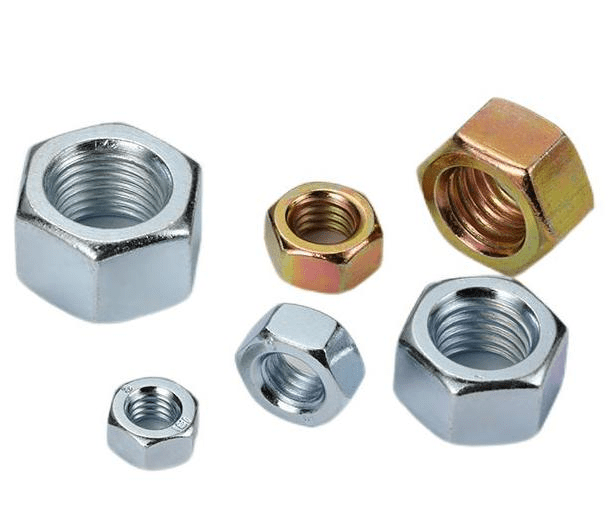
Common Types of Hex Nuts
1. Standard Hex Nuts
Standard hex nuts, often referred to as finished hex nuts, are the most widely used type. These nuts are designed for general-purpose fastening and are compatible with bolts of the same size and thread pitch. Their straightforward design and durability make them a staple in construction, machinery, and household projects.
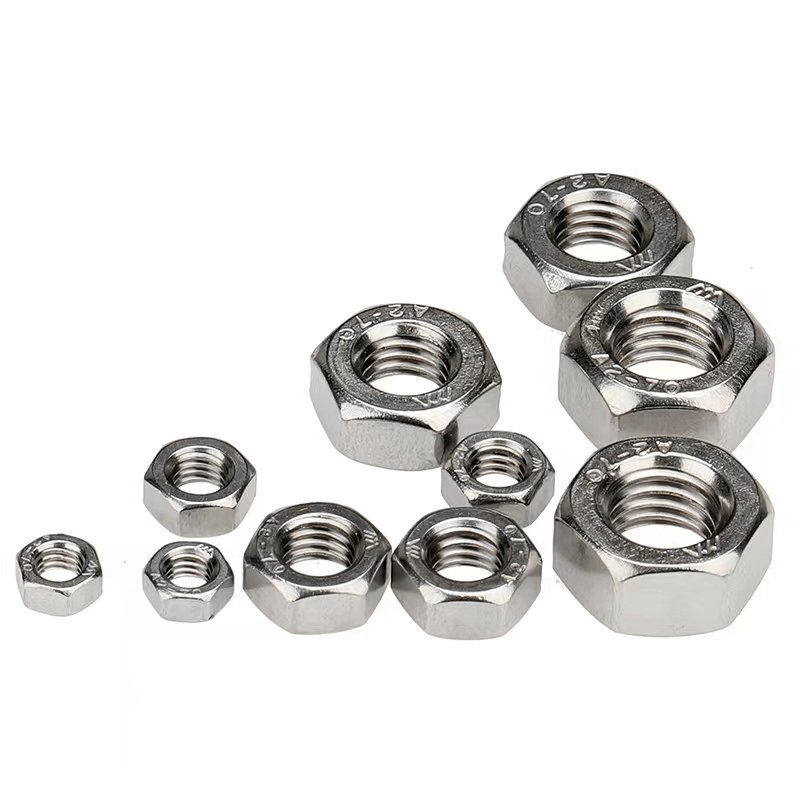
2. Lock Nuts
Lock nuts are designed to resist loosening under vibration or torque, ensuring a secure and reliable connection. They incorporate unique features such as nylon inserts, serrated edges, or deformed threads to create friction or prevent movement once tightened.
Available in various materials, including steel, stainless steel, and brass, lock nuts are widely used in automotive, industrial, and machinery applications where safety and stability are critical. Their durable and self-locking design makes them an essential component for maintaining structural integrity in dynamic or high-stress environments.
Types:
- Nylon Insert Hex Lock Nuts: Feature a nylon ring that creates friction against the bolt threads.
- All-Metal Lock Nuts: Use a deformed thread or serrations for locking, making them suitable for high-temperature environments.
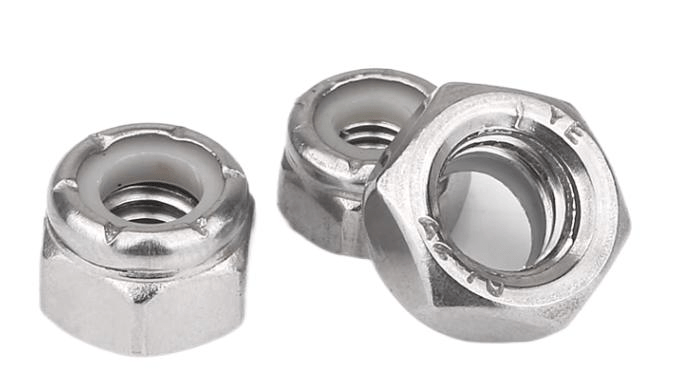
3. Jam Nuts
Jam nuts are thin, low-profile nuts designed to be used as a locking mechanism in conjunction with a standard nut. Typically positioned below or above the primary nut, they are tightened against it to prevent loosening caused by vibration or movement.
Jam nuts are commonly used in applications where space is limited or when a lighter, more compact fastening solution is required. Made from materials like steel, stainless steel, or brass, they provide a reliable way to secure threaded connections in machinery, automotive, and industrial systems.
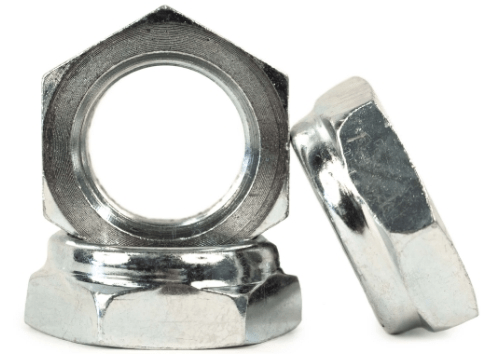
4. Flange Nuts
Hex flange nuts feature an integrated flange at one end, designed to evenly distribute pressure over a larger surface area. This built-in flange eliminates the need for a separate washer and provides better grip and resistance to loosening, especially in high-vibration applications.
Commonly used in automotive, machinery, and construction industries, hex flange nuts enhance the stability and durability of connections. They are available in various materials, including steel and stainless steel, and often come with plain, serrated, or self-locking designs for added functionality.
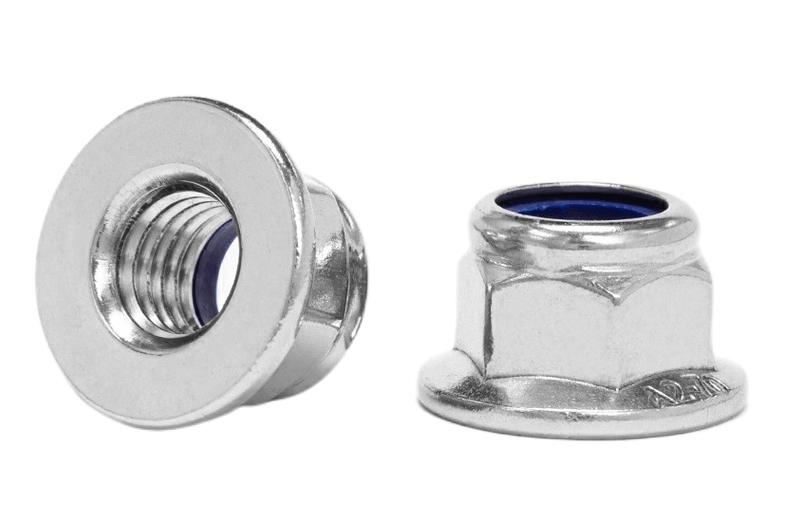
5. Heavy Hex Nuts
Heavy hex nuts are larger and thicker than standard hex nuts, offering enhanced strength and durability for high-stress applications. Their increased size and weight provide a greater load-bearing capacity, making them ideal for use in construction, heavy machinery, and structural projects.
With six sides for easy wrench engagement, heavy hex nuts are available in various materials, such as carbon steel, stainless steel, and alloy steel, and often feature coarse or fine threading. They are commonly used with large-diameter bolts or in situations requiring extra resistance to vibration and torque.
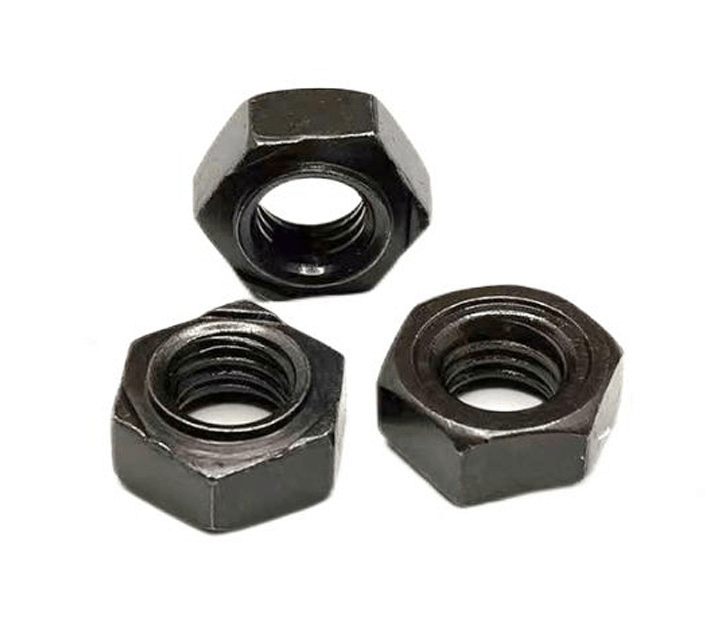
6. Slotted Hex Nuts (Castle Nuts)
Slotted hex nuts, often referred to as castle nuts, feature slots or grooves on their top surface. These slots are designed to align with a drilled hole in a bolt or stud, allowing a cotter pin to be inserted for added security and to prevent the nut from loosening.
Commonly used in applications requiring high reliability, such as automotive, aerospace, and machinery, slotted hex nuts are ideal for dynamic environments with vibrations or rotational forces. They are typically made from durable materials like steel or stainless steel, ensuring long-lasting performance.
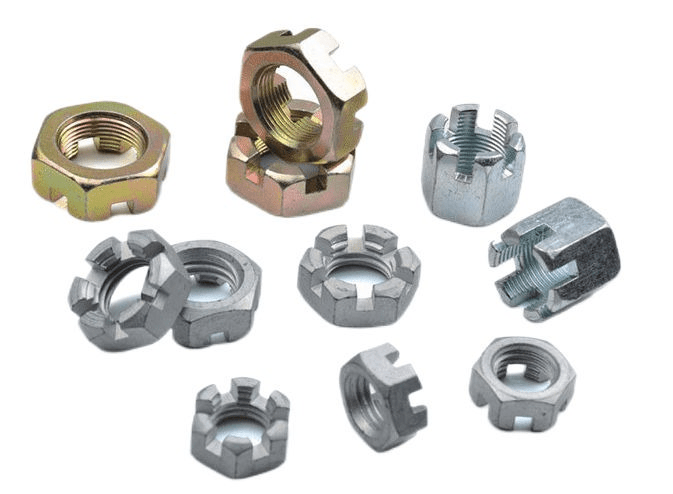
7. Coupling Nuts
Coupling nuts are elongated fasteners designed to connect two threaded rods or bolts, effectively extending their length. With internal threading throughout, these nuts ensure a secure and stable joint while maintaining alignment.
Commonly used in structural applications, machinery, and construction, coupling nuts provide a reliable solution for extending threaded connections. Their design accommodates high-strength requirements and precise assembly, making them essential in various engineering and industrial tasks.
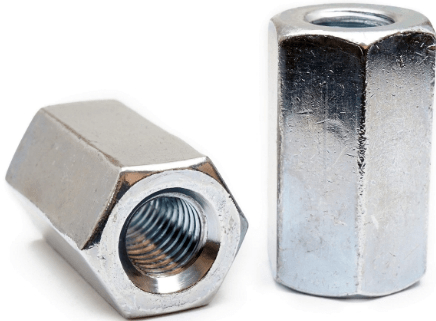
8. Wing Nuts
Wing nuts are featuring two wing-like protrusions that allow for easy hand tightening or loosening without the need for tools. Their ergonomic design makes them ideal for applications requiring frequent adjustments or quick assembly, such as furniture, equipment, and machinery.
Made from materials like steel, stainless steel, aluminum, or plastic, wing nuts provide a balance of convenience and durability. They are commonly used in low-torque, lightweight applications where ease of use and reusability are prioritized.
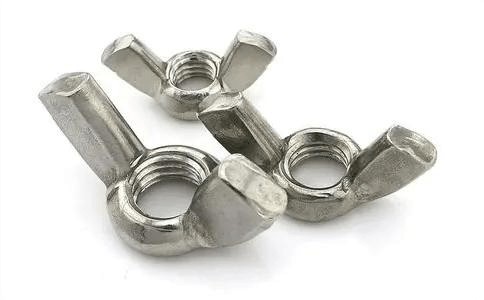
9. Thin Hex Nuts
Thin hex nuts, are low-profile fasteners designed for applications where space is limited or additional locking support is required. These nuts are typically used alongside standard nuts to prevent loosening or as standalone components in compact assemblies.
Their slim design makes them ideal for precision equipment, machinery adjustments, and situations where a smaller fastening profile is essential. Despite their reduced size, thin hex nuts provide reliable performance in securing threaded connections.
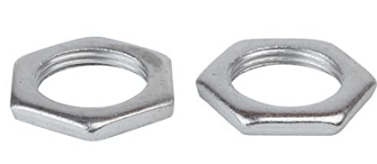
10. Self-Locking Hex Nuts
Self-locking hexagon nuts are specialized fasteners designed to resist loosening under vibrations or torque. They achieve this through built-in features, such as nylon inserts or deformed threads, which create friction against the mating bolt.
Commonly used in automotive, aerospace, and industrial applications, these nuts ensure secure and reliable connections even in dynamic environments. Their ability to maintain tightness without additional locking mechanisms makes them a preferred choice for critical assemblies.
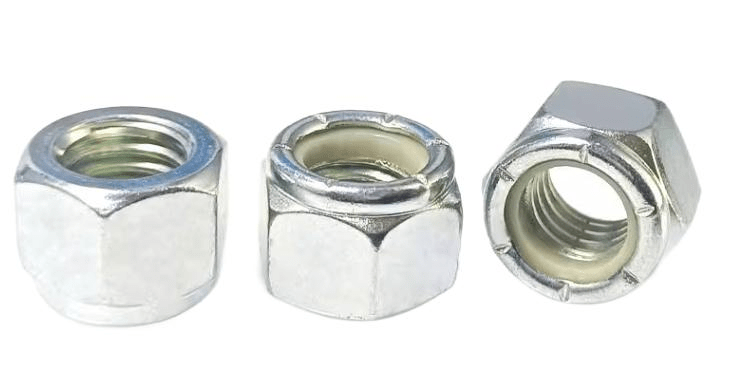
Key Factors to Consider for Choosing the Right Type of Hex Nuts
This chart provides a concise way to evaluate hex nuts based on application-specific needs, helping ensure a secure and reliable fastening solution.
| Key Factors | Description | Relevant Hex Nut Types |
| Load Capacity | Consider the nut’s ability to withstand the forces applied to the joint. | Heavy Hex Nuts, Standard Hex Nuts |
| Resistance to Vibration | Select nuts that prevent loosening in environments with frequent vibration or dynamic loads. | Lock Nuts (Nylon Insert, All-Metal), Slotted Hex Nuts (Castle Nuts) |
| Thread Size | Ensure the thread size matches the bolt or screw for a secure fit. | All Types |
| Material Strength | Match the material to the strength requirements of the application. | Heavy Hex Nuts, Standard Hex Nuts |
| Corrosion Resistance | Choose materials or coatings that resist rust in outdoor or marine environments. | Flange Nuts, Lock Nuts, Stainless Steel Nuts |
| Surface Protection | Opt for nuts that distribute pressure and prevent damage to connected surfaces. | Flange Nuts, Jam Nuts |
| Ease of Use | For quick assembly or frequent adjustments, select user-friendly designs. | Wing Nuts, Coupling Nuts |
| High-Temperature Suitability | Use nuts capable of withstanding elevated temperatures without deformation. | All-Metal Lock Nuts, Heavy Hex Nuts |
| Secure Fastening | For critical or safety-related applications, prioritize nuts with locking or pinning features. | Slotted Hex Nuts (Castle Nuts), Self-Locking Hex Nuts |
| Space Constraints | Ensure the nut’s size and profile fit within the space available for fastening. | Jam Nuts, Standard Hex Nuts |
| Application Type | Consider the specific environment, industry, and load requirements. | All Types (tailored to application needs) |
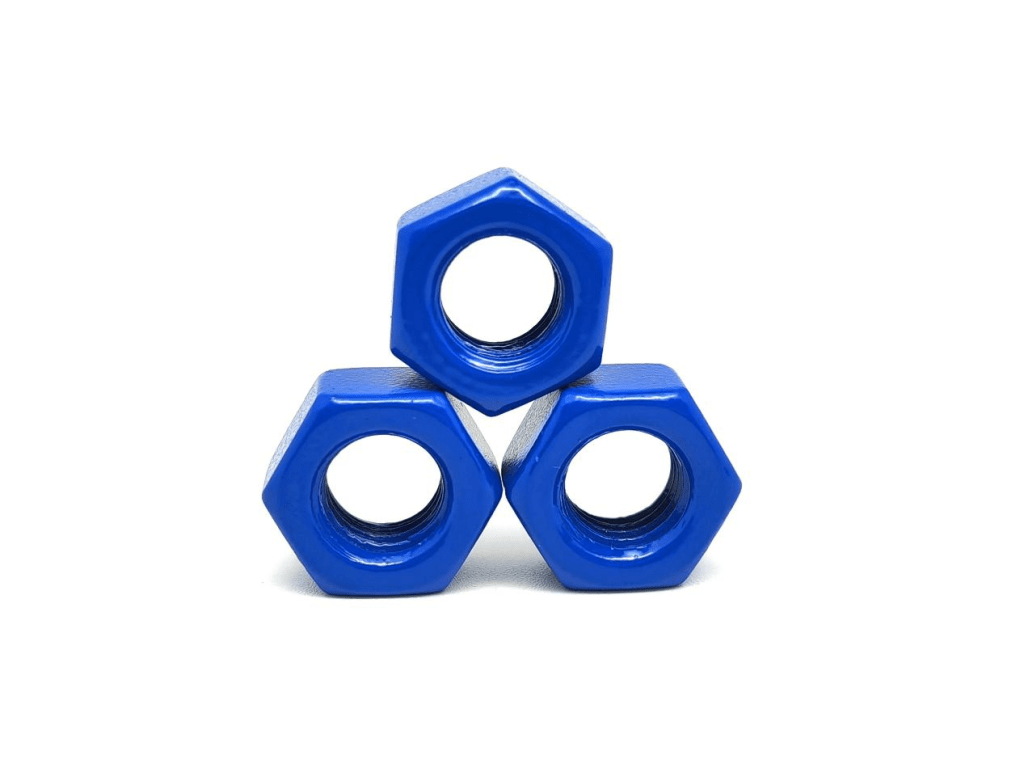
Summary
Hex nuts come in various types to suit the diverse demands of modern engineering and manufacturing. Whether you need high strength, resistance to vibration, or ease of use, there is a hex nut designed to meet the challenge. By understanding the differences in design, materials, and applications, users can select the appropriate hexagonal nut for their specific requirements, ensuring secure and lasting connections.

